Biofloc systems are becoming popular for fish farmers to retain waste and nutrients in culture water. Biofloc technology was developed in the 1990s as a way for fish farmers to conserve feed inputs and use wastewater during production. The basic concept is that producers can shut down the nitrogen cycle and allow beneficial bacterial colonies to proliferate in the culture water. And you can follow this guideline to start your Biofloc fish farming.
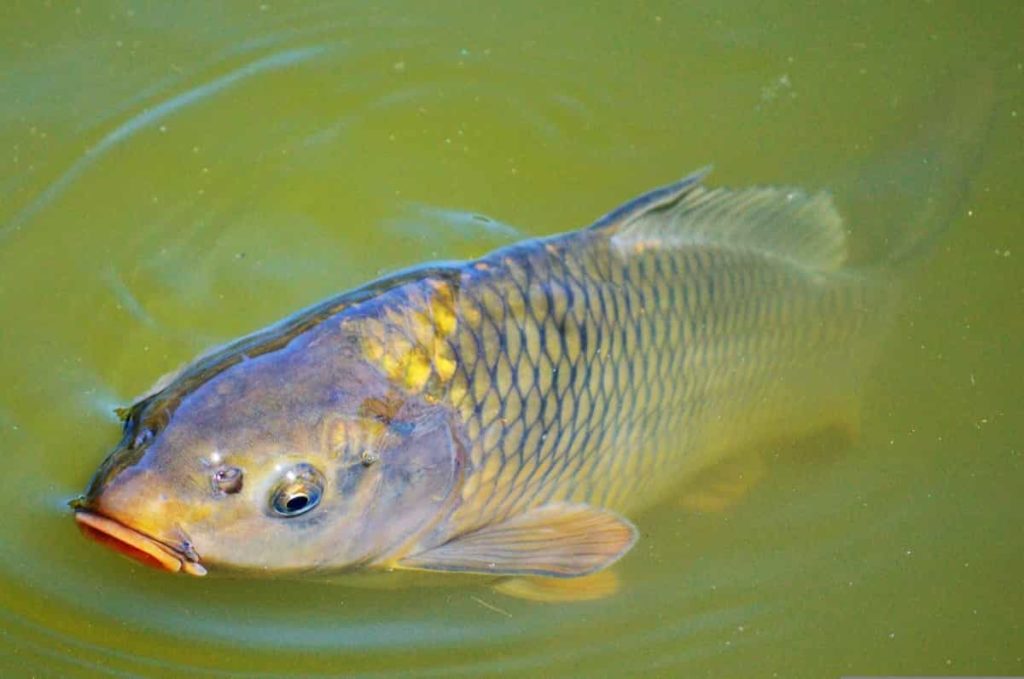
A guide to understand Biofloc fish farming
What fish can be farmed in a Biofloc?
Let us look at some fish that best adapt to the Biofloc method and produce high-quality products in a BFT environment for your Biofloc fish farm.
- Air-breathing fish species like Singhi, Magur, Anabas/Koi, Pangasius
- Non-air breathing fish like Common Carp, Rohu, Tilapia, Milkfish
- Shellfish
- Tilapia
- Salmon
- Catfish
- Carp
- Trout
- Bass
Is Biofloc fish farming profitable?
Biofloc fish farming method has many advantages as it cleans the water impurities for fish. It is a very profitable low-budget method of fish farming. Farmers engaged in fish production increasingly turn to Biofloc farming technology to sustainably increase production. Biofloc systems are wastewater treatments that have gained significant importance as an approach in aquaculture. The principle of the technique is to maintain a high C-N ratio by adding a carbohydrate source.
The water quality is improved by producing high-quality single-cell microbial proteins. To achieve this, producers must maintain a high carbon-to-nitrogen ratio in their ponds. It will stimulate the growth of heterotrophic bacteria – microbes that break down organic carbon from the surrounding environment. Bacterial growth (floc) can consume nitrogenous fish waste and toxic metabolites before being consumed by cultured species. It will reduce both the environmental impact of production and food costs.
In case you missed it: Earning 10 Lakh Per Year from Biofloc Fish Farming – A Success Story, Double Your Profit with Biofloc
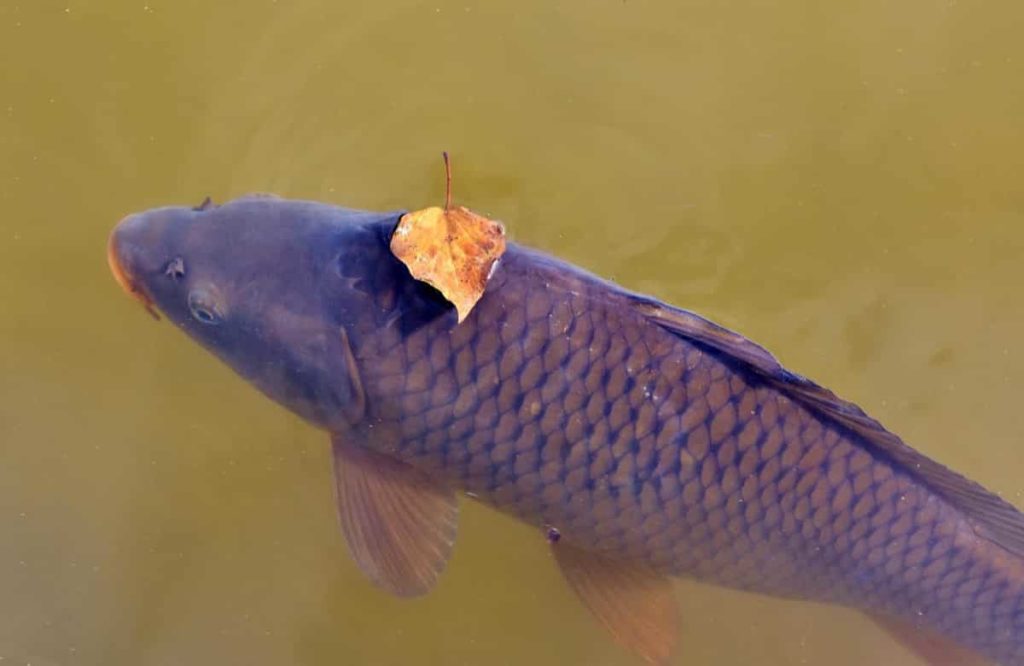
How does the Biofloc system work?
This profitable method of farming fish is used in a tank that comes in different sizes. The most common size is four diameters. It converts unused feed and aqua animal waste into feed in a culture system while producing protein-rich live feed in sunlight. Converting surplus feed back into feed reduces the cost of feed. Heterotrophic bacteria are the main Biofloc component. These heterotrophic bacteria consume ammonia and convert it into protein. The fish can then use it for growth. It acts as the main food for fish. It also has good nutritional value.
How Biofloc helps in cost saving and can double your revenue?
This profitable method of Biofloc farming minimizes all the major costs so that the savings can be big. When you adopt this method, many factors like high operational cost, large land cost, and high cost of feeding, disposal, and disposal of waste sludge will not be a problem. In aquaculture, the largest cost is the feed ingredients for the fish. When fish are fed high-protein diets, about 70% of this is excreted as nitrogen in the surrounding culture water as waste.
With Biofloc, we can recycle this waste back into feed and reduce the costs of high protein feeds. Biofloc systems improve fish health as well as reduce the spread of pathogens. By deducting all these costs, you can estimate that your income will easily double by increasing the quantity of fish without compromising on quantity.
How do you set up a Biofloc fish tank?
In the Biofloc technique, fish are reared in small tanks of about 4 meters in diameter with a capacity of about 600 fish. Apart from the fish, a culture of heterotrophic bacteria is also grown with them. The setup also requires aeration and mixing mechanisms to balance the oxygen supply and properly function the heterotrophic bacterial culture. Heterotrophic bacterial cultures grown with fish serve to recycle nutrients. Bacteria consume unused protein feed and nitrogenous waste, increasing their protein intake.
These proteins recover from aggregates called fluxes and reuse them as fish feed. Heterotrophic bacteria also convert harmful ammonia into non-toxic nitrates and usable proteins. In traditional pond farming, when we provide protein feed to the fish, they can only use 25% of it for direct body growth. At the same time, the remaining 75% goes into the water and contributes to the growth of unwanted aquatic weeds or algae. Accumulating waste feed and nitrogenous wastes in water reduces its oxygen level and necessitates replacing water in conventional aquaculture.
In case you missed it: Biofloc Fish Feeding Chart – Per Body Weight
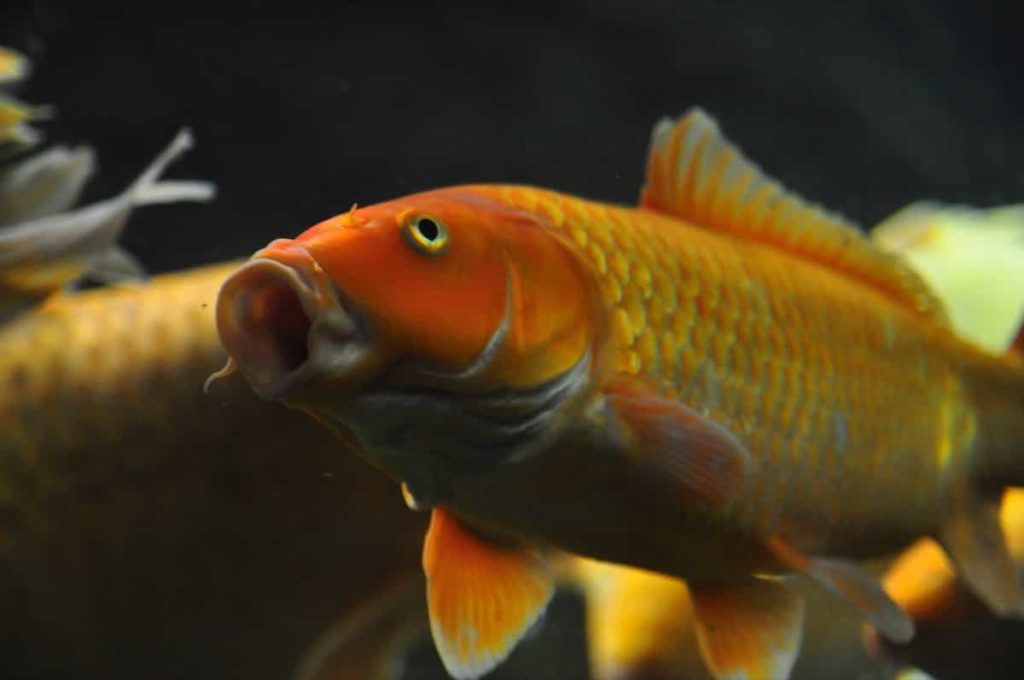
How much profit does a Biofloc fish farmer make?
Biofloc is a very profitable business. The investment cost for fish production in Biofloc is around $1.5. The same fish costs about $4 on the market. Therefore, it is a profit of $2.5 per fish and can be higher depending on the fish species with market demand.
How much does it cost to build a Biofloc fish farm?
- The installation cost of a two-tank Biofloc unit is Rs 1.50 lakh, while the cost of a 6-tank Biofloc unit is around Rs 4 lakh.
- Some state governments provide a 40% subsidy, while SC and ST beneficiaries are provided a 60% subsidy.
Is sunlight necessary for Biofloc?
- Best of all, the principles of Biofloc require very little investment to implement – as only sunlight, a carbohydrate source, and sufficient air are required.
- Biofloc systems bank photosynthesis to convert undigested feeds, waste, and excess nutrients into the food.
What is the purpose of Biofloc technology?
In a Biofloc system, nutrients and waste produced from nitrogen are recycled. Recycling keeps the water’s nitrogen and carbon dioxide ratio high. These are maintained at high levels for the stimulation of heterotrophic bacteria. Bacterial growth will increase when carbon dioxide sources such as cellulose or molasses are kept in the pond with constant air circulation.
By maintaining the carbon to nitrogen ratio by adding carbon sources, microbial protein production with high quality is achieved. Water quality is enhanced through biofloc systems. Along with the water quality, there will also be an excellent source of nutrients available to the fish, which helps their healthy growth and increases their disease resistance. This method can be applied after checking the temperature as well as the pH level of the water, dissolved oxygen level, etc.
What are the advantages of Biofloc fish farming?
- The flocs are rich in protein and provide fish and shrimp with a good source of vitamins and phosphorus.
- Farmers have also reported higher productivity indicators with the system compared to traditional aquaculture techniques.
- The use of Biofloc technology helps to improve water and land use rates.
- It reduces environmental impact.
- It is a limited or zero water exchange system.
- High productivity (it increases survival rate, growth efficiency, and better feed conversion in fish culture systems).
- High biosecurity.
- Reduces water contamination and reduces the risk of entry and spread of pathogens.
- It reduces the consumption of protein-rich feed and the cost of quality feed.
In case you missed it: Questions about Biofloc Fish Farming with Answers
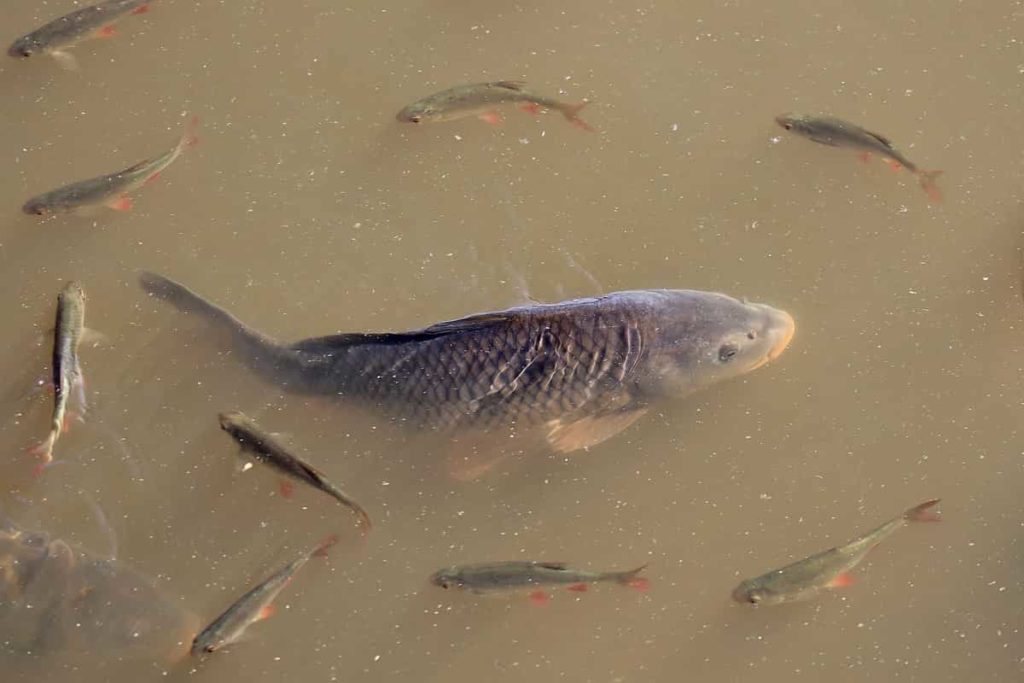
What are the limitations of Biofloc technology?
- High setup cost – The initial investment in equipment and infrastructure is relatively high for marginal and small farmers, which limits the penetration of this technology to the lowest level.
- Technical skills required – A skilled person needs to be able to manage the setup properly, and if this is not the case, then this person should be readily available at minimum time. Non-availability of such individuals also limits the diffusion of this technology.
- Requirement of continuous power supply and energy costs – It is needed to operate aeration machines and other equipment; loss of power is harmful as it reduces water quality.
- Requirement of Supplements – To maintain C:N ratio, alkalinity, and other factors add relevant supplements like sugar molasses, liming material, etc.
- The start-up period is required – Biofloc technology needs an initiation period for the bacteria to become active and function properly.
What are the requirements for Biofloc fish farming?
Step 1: Pond / Tank set-up
Although converting traditional fish ponds to Biofloc systems is not difficult, It is also difficult, as microbes, minerals, and heavy metals naturally present in the soil easily affect the water parameters of the pond and can affect the natural processes under the Biofloc. Systems can be used to create Biofloc systems based entirely on indoor tanks of bacteria, but without natural sunlight, the algae will not grow enough. If you use larger ponds, you may occasionally need to install bottom drains to remove excess sludge. It is especially important when adding carbohydrates regularly.
Step 2: Aeration
As Biofloc systems require constant agitation to maintain high oxygen levels and prevent solids from accumulating, it’s time to think about air conditioning and do it right after choosing the right pond or tank setup. The moving areas will quickly get oxygenated. Otherwise, it will turn into an anaerobic zone that releases large amounts of ammonia and methane. So to prevent this, every pond, tank, and even raceway system should have a well-planned arrangement of aerators.
A typical pond typically uses paddle-wheel aerators. A Biofloc system requires about 6 milligrams of oxygen per liter per hour, and a minimum of 30 horsepower aerators per hectare is recommended to begin with. Paddle-wheel aerators should be installed strategically to create a current in the pond.
Step 3: Ventilation
Once you’ve selected the right pond or tank, it’s time to work on the ventilation system. All biofloc systems require a constant velocity to maintain high oxygen levels and density stability. Non-moving areas will rapidly become oxygen-deprived and anaerobic zones that emit large amounts of ammonia and methane. Every pond, tank, or raceway system needs clean aerators to avoid this.
Ponds typically use paddle-wheel aerators. Biofloc systems require 6-7 milligrams of oxygen per liter and are recommended to start with aerators of at least 30 horsepower per hectare of land. Depending on the system’s productivity, this number can reach 200 horsepower per hectare. Paddle-wheel aerators should be strategically placed to create a current in the pond. You must also move some aerators regularly to ensure solid particles don’t settle in little or low-volume areas.
Step 4: Fish species selection and raise in density
Most fish species will benefit from the improved water quality of Biofloc systems, and you must select species capable of Biofloc self-feeding and digestion. Complete or partial filter feeders make the most of the extra protein produced by these species. Both shrimp and tilapia are excellent candidates in that they remain silent on Biofloc, thus dramatically improving the feed efficiency and FCR of your farming operation.
In case you missed it: Cost of Biofloc Farming, Biofloc Setup Cost, Disadvantages
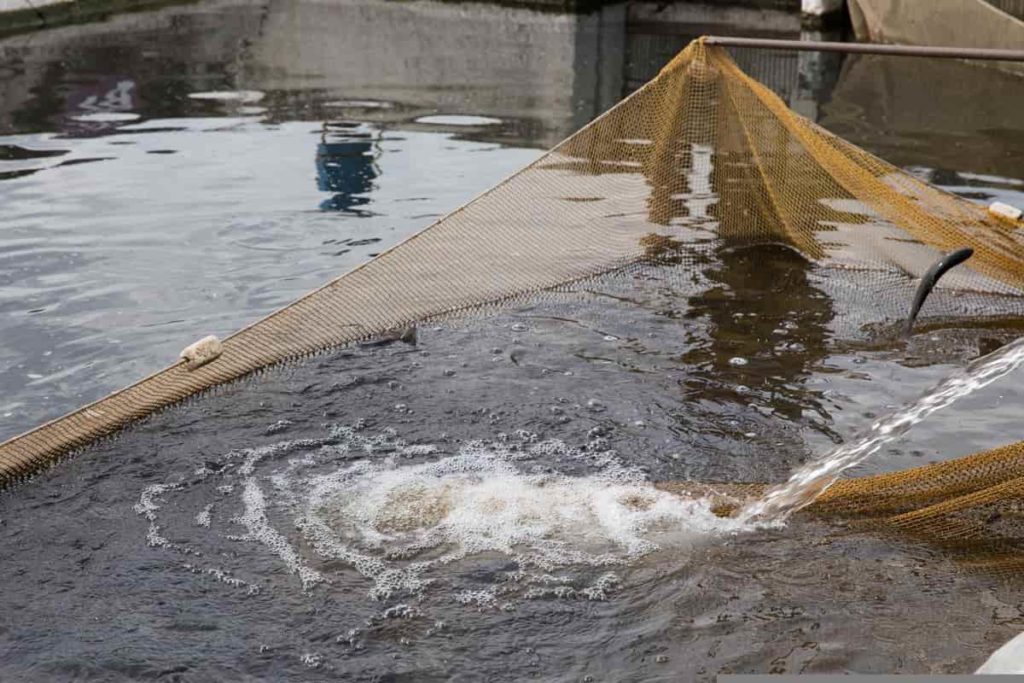
Step 5: Pre-seeding the beneficial microbes
You need to properly pre-seed the culture water to accelerate the growth of your Biofloc system and stabilize your pond quickly. You can add several commercial or homemade formulations to the culture water. A simple homemade recipe uses wheat pollard on your farm to instantly generate probiotic and prebiotic microbes.
Higher stocking densities may be considered, and it is common to stock shrimp at densities of 150 to 250 post larvae per square meter, with a safe stocking density of up to 300 fry per cubic meter for tilapia. Many farmers try to use higher stocking densities, which significantly increases the risk of disease, compromising animal health and welfare.
Step 6: Balancing carbon source input
To prevent ammonia peaks at the start of farming, you need to start Biofloc growth in your pond or raceway system by ensuring adequate availability of carbohydrates. The carbon in these types of carbohydrates enables heterotrophic bacteria to grow and synthesize ammonia and thus maintain water quality. Finally, to prevent ammonia peaks later in the production system, this step should also be repeated, especially when high stocking densities are used in combination with large amounts of synthetic feeds.
Step 7: Control of Biofloc technology
From this point, monitoring the pond water, taking regular water samples, and determining the performance of the two types of Biofloc technology and their respective densities are necessary. Simply put, outdoor Biofloc consists of green algae and brown bacteria: the algae primarily use sunlight for their growth, while the bacteria primarily use leftover food, their by-products, and associated waste.
Since algae initially grow rapidly, as the bacterial colony begins to dominate, the pond will turn green the next week and brown the next. As the stock increases and the dose increases, a tipping point will be reached at which the water will remain brown.
Step 8: Harvesting and cleaning
If all steps are followed properly, you can expect an increased growth rate and survival, thereby reducing overhead costs and improving profitability. But it would help if you did not forget that proper cleaning and preparation of the pond setup or raceway after harvest is also very important.
After taking the step, a farmer can see the difference in cost and profit. After harvesting, it is important to clean and prepare the pond layout for the raceway. Heavy metals can accumulate in the culture water over time, making the stock solution unsafe to use. To start your next profitable batch, you need to clean up thoroughly.
What materials are required for Biofloc fish farming?
1. Tank – When we start Biofloc fish farming, the first thing we need is a tank. We can start fish farming using only one tank. We can start commercial fish farming by adding more tanks if the production is good. Tanks are a basic requirement. The base or floor of the Biofloc tank is made of bricks, sand, cement, and sometimes mud, with adequate outlet provision.
The outer surrounding frame of the tanks may be made of cement on top, or tarpaulin may be available. If we use a tarpaulin tank, we need an outer metal frame to support the tarpaulin. The final inner lining should be tarpaulin. It helps in collecting and storing the water inside the tank. The tarpaulin is specially designed for Biofloc fish farming. Thus, use any tank, i.e., tarpaulin and cement tank, for Biofloc culture.
2. Outlet – The outlet helps regulate the tank’s water level. It is built from the base of the tanks with the help of pipes.
3. Oxygen supplier (Tank) – This is the most important thing we need during Biofloc farming. At Biofloc, we raise large numbers of fish in a small area of tanks. That is why there is a lack of oxygen for the fish. Dissolved oxygen alone cannot meet the needs of all the fish in the tank. If the fish do not get enough oxygen, they die within (4-5) hours. Therefore, there should be a regular supply of oxygen inside the tanks. Buy some machines that take oxygen from the atmosphere and send it in pipes with good pressure.
Pipes are laid around the cultured fish area. Now, small pipe mains near each tank are connected with oxygen pipes. This small pipe then dissolves in the tank water. It supplies oxygen inside the tanks. The oxygen machine is powered by electricity. That is why electricity is also important in Biofloc farming.
4. Probiotics or Bacteria – Bacteria make Biofloc fish farming different from conventional fish farming. The bacteria used in Biofloc are heterotrophic. They feed on fish waste products, including feed waste. Using fish waste maintains toxic ammonia levels within the tank. If ammonia levels become high, it can cause fish kills. Moreover, bacteria also convert some of the waste into protein cells. This protein cell serves as food for fish. Bacterial numbers are maintained by adding carbohydrates and molasses inside the tanks. They continue their work of cleaning the water at a faster rate.
How do you feed Biofloc fish?
- Biofloc requires a small amount of sunlight, a carbohydrate source, and plenty of air.
- Biofloc culture systems bank photosynthesis to convert undigested feeds, feces, and excess nutrients into the food.
- Before introducing nursery fish into the tank, it is recommended to disinfect the fish so that harmful bacteria do not enter the Biofloc tank.
Can Rohu be grown in Biofloc?
- Lower stocking densities produced larger fish, but growth within stocking densities was similar between control and Biofloc treatments.
- The nutritional quality of Biofloc was found to be quite suitable for Rohu.
- Rohu fish usually reach maturity at the age of three years.
Is Biofloc fish safe to eat?
Biofloc has good nutrition. Dry weight protein ranges from about 25 to 50 percent, and fat ranges from 0.5 to 15 percent. It is a good source of vitamins and minerals, especially phosphorus. It also has the same effect as probiotics.
Which water is used for Biofloc fish farming?
Before adding water to the tank, it should be adequately cleaned. Use a solution of potassium permanganate, i.e., KMNO4 (antifungal agent), to wash the tank and leave it for 24 hours to clean. This solution helps kill all the unwanted bacteria in the tank. Check the water parameter to ensure it is compatible with the Biofloc environment. If you plan on a commercial scale, it is important to have the water tested in laboratories.
It would be good if the water had negligible or zero pathogens (which can destroy the Bioflocs). It is best to have your water tested for iron, chlorine, hardness, etc. The salinity of the water is an important component of the Biofloc system and depends on the type of fish you want to grow. Each aquatic animal has a different salinity level, so you need to check to maintain the salinity level of the water according to the type of fish you want to grow. A salinity meter helps to measure the salinity of water, i.e., the salt content in water.
Do we need to change the water in the Biofloc tank?
Ammonia is controlled due to the conversion of fish waste into protein. The need to change fish tank water is very low; only 5% – 10% of the water must be changed once every 15 days. Maintaining water quality at low cost and without water exchange, another goal of Biofloc systems is also to improve growth rates and feed efficiency, thereby improving the profitability and sustainability of farming operations.
Knowing how a farm is doing requires daily monitoring of farm stock performance, calculating, recording growth rates, and analyzing it properly like a business, taking into account overall appearance and stock survival.
In case you missed it: Biofloc Fish Farming Advantages; Training in India
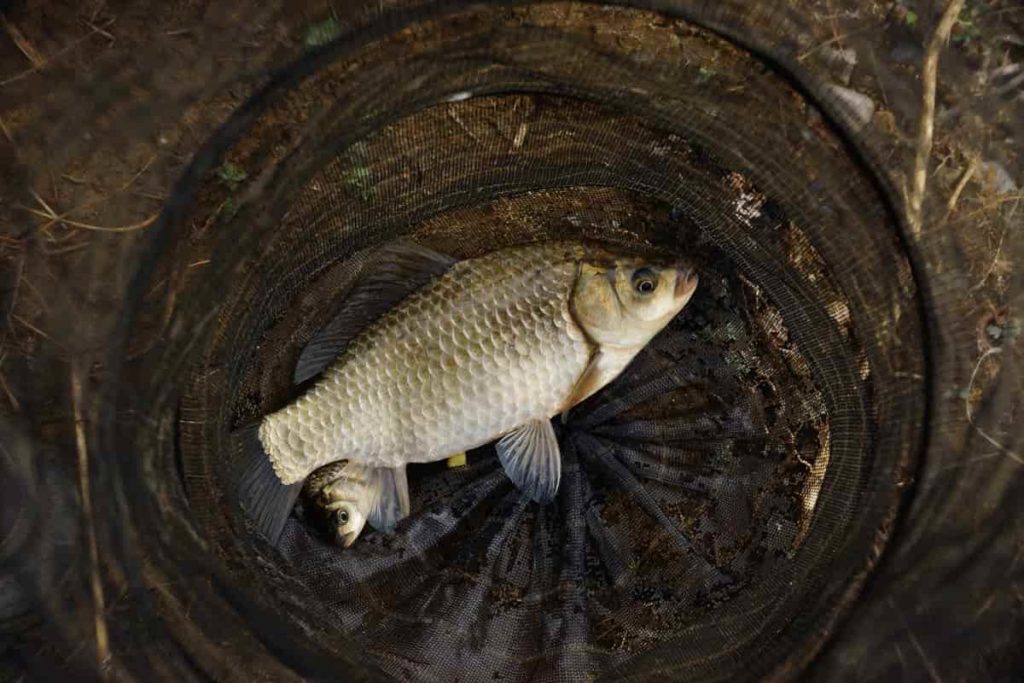
How do you maintain the Biofloc system?
- Seed fish (babies) transported from far away to be put into tanks need more care because they are under stress. Adequate food should be given. Avoid feeding too much, or the fish may die.
- Fish don’t develop overnight. A farmer should be patient to earn good money.
- The pH should not be too high or too low. A pH of around 7.5 is good.
- There should be a constant supply of oxygen in the fish tank. Ammonia and bacteria levels should be controlled.
- It is better to practice Biofloc fish farming, and it should be started on a small scale at the initial stage.
How can fish disease be controlled in Biofloc?
- In traditional fish farming, the fish consume very little of the water that is given to them. It wastes food and then turns it into toxic metabolism. It pollutes the water, and its stench spreads to the surrounding environment.
- Feed is an essential part of fishing. Fish require regular daily feeding for growth and development. Fodder is expensive, and food waste is a loss for farmers. Food waste in Biofloc farming systems and fish waste in aquatic ecosystems are converted into fish feed. Moreover, fishermen save on food, and it is also readily available.
- An expensive water exchange system replaces contaminated water with fresh water in open pond fish farming. Otherwise, exposure of fish to pathogens and toxic organisms and disease outbreaks causes financial loss to farmers.
- Biofloc systems use probiotics or microorganisms that stimulate specific immunity in species and reduce pathogenic bacteria. In addition, water exchange systems and associated operating costs are avoided. It is sustainable and provides maximum productivity. Also, it promotes the development of the fishing industry.
Conclusion
Biofloc systems are becoming popular for their low-cost means of purifying fish farm culture water and providing an additional feed source. Biofloc systems require less investment to implement because most of the factors are natural, requiring adequate sunlight, a source of carbohydrates, and plenty of air. Biofloc production can reduce mortality, increase larval growth and improve growth rates in cultured species. It is an eco-friendly cultural system.
- Types of Pesticides Used in Agriculture: A Beginner’s Guide
- Economical Aquaculture: A Guide to Low-Budget Fish Farming
- 15 Common Planting Errors That Can Doom Your Fruit Trees
- How to Make Houseplants Bushy: Effective Tips and Ideas
- Innovative Strategies for Boosting Coconut Pollination and Yield
- Pollination Strategies for Maximum Pumpkin Yield
- The Complete Guide to Chicken Fattening: Strategies for Maximum Growth
- Natural Solutions for Tulip Problems: 100% Effective Remedies for Leaf and Bulb-Related Issues
- Revolutionizing Citrus Preservation: Towards a Healthier, Greener Future
- Natural Solutions for Peony Leaf and Flower Problems: 100% Effective Remedies
- Maximizing Profits with Avocado Contract Farming in India: A Comprehensive Guide
- Natural Solutions for Hydrangea Problems: 100% Effective Remedies for Leaf and Flowers
- The Ultimate Guide to Choosing the Perfect Foliage Friend: Bringing Life Indoors
- From Sunlight to Sustainability: 15 Ways to Use Solar Technology in Agriculture
- The Ultimate Guide to Dong Tao Chicken: Exploring from History to Raising
- The Eco-Friendly Makeover: How to Convert Your Unused Swimming Pool into a Fish Pond
- Mastering the Art of Delaware Chicken Farming: Essentials for Healthy Backyard Flocks
- 20 Best Homemade Fertilizers for Money Plant: DIY Recipes and Application Methods
- How to Craft a Comprehensive Free-Range Chicken Farming Business Plan
- Brighten Your Flock: Raising Easter Egger Chickens for Beauty and Bounty
- How to Optimize Your Poultry Egg Farm Business Plan with These Strategies
- Subsidy for Spirulina Cultivation: How Indian Government Schemes Encouraging Spirulina Farmers
- Ultimate Guide to Raising Dominique Chickens: Breeding, Feeding, Egg-Production, and Care
- Mastering the Art of Raising Jersey Giant Chickens: Care, Feeding, and More
- Ultimate Guide to Raising Legbar Chickens: Breeding, Farming Practices, Diet, Egg-Production
- How to Raise Welsummer Chickens: A Comprehensive Guide for Beginners
- How to Protect Indoor Plants in Winter: A Comprehensive Guide
- Ultimate Guide to Grow Bag Gardening: Tips, Tricks, and Planting Ideas for Urban Gardeners
- Guide to Lotus Cultivation: How to Propagate, Plant, Grow, Care, Cost, and Profit
- Agriculture Drone Subsidy Scheme: Government Kisan Subsidy, License, and How to Apply Online
- Ultimate Guide to Raising Araucana Chickens: Breed Profile, Farming Economics, Diet, and Care
- Bringing Hydroponics to Classroom: Importance, Benefits of Learning for School Students
- Ultimate Guide to Raising Polish Chickens: Breed Profile, Farming Economics, Diet, and Care
- Ultimate Guide to Raising Australorp Chickens: Profile, Farming Economics, Egg Production, Diet, and Care
- Silkie Chicken Farming: Raising Practices, Varieties, Egg Production, Diet, and Care
- Sussex Chicken Farming: Raising Practices, Varieties, Egg Production, Diet and Care
I now have a better understanding of What Biofloc fish farming is. Thank you for the comprehensive explanation. You have inspired me to give it a trial. Thank you.